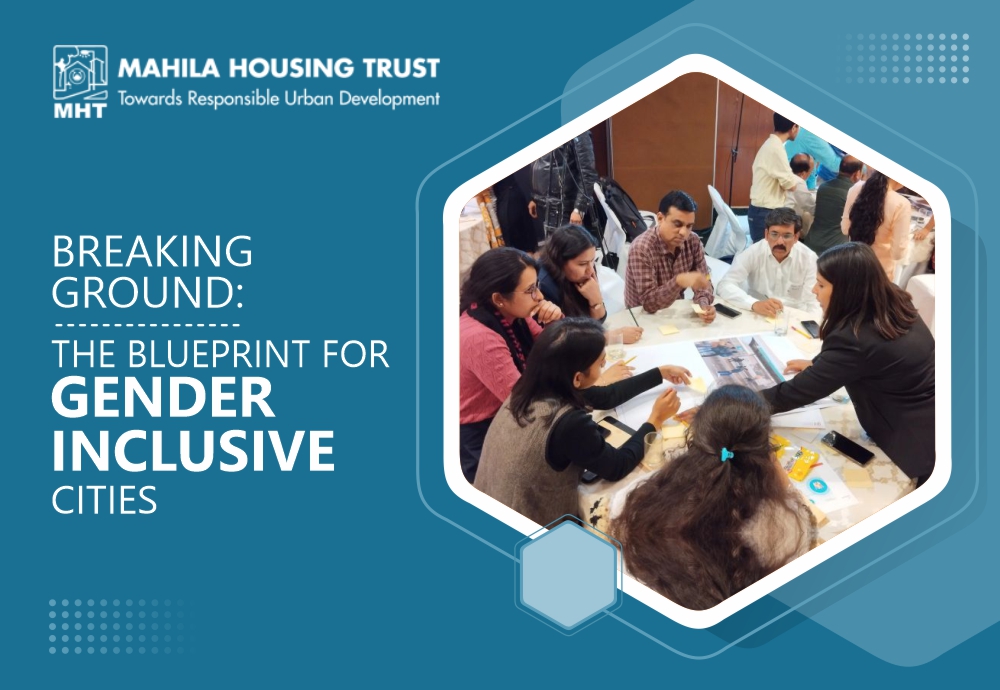
Breaking Ground: The Blueprint for Gender Inclusive Cities
In bustling cities teeming with progress and innovation, inclusivity is paramount. Gender-inclusive cities lead the way towards fair urban spaces where everyone’s needs, especially women’s, are recognized and respected.
Understanding Gender Inclusive Cities
Gender-inclusive cities are urban spaces intentionally designed and managed to ensure equal access, opportunities, and safety for all genders. These cities prioritize the needs and perspectives of women in urban planning, infrastructure development, and community engagement. Their aim is to empower women, foster respect, and integrate them fully into the social, economic, and cultural fabric of the city.
Key Principles of Gender Inclusive City Planning
- Accessibility and Mobility: Urban infrastructure and transportation systems must accommodate diverse mobility needs, including safe pedestrian pathways, public transportation, and cycling lanes. Affordable and efficient transportation options should enable women to access essential services, employment, and recreational activities.
- Safety and Security: Urban environments must prioritize the safety and security of all residents, particularly addressing issues like harassment, violence, and fear of crime. Measures such as well-lit streets, CCTV surveillance, police patrols, and community-based safety initiatives enhance public spaces’ safety and empower women to move freely and confidently.
- Representation and Participation: Women’s active involvement in decision-making processes related to urban planning and participatory governance is essential. Gender-balanced representation in city councils, advisory boards, and community forums ensures diverse perspectives shape the future of communities.
- Economic Empowerment: Supporting women’s economic empowerment involves promoting equal access to employment, entrepreneurship support services, and financial resources. Women-owned businesses, cooperatives, and social enterprises should be encouraged, fostering inclusive economic ecosystems benefiting women and their communities.
- Social Inclusion and Community Spaces: Public spaces must cater to diverse social and recreational needs, providing parks, playgrounds, community centers, and cultural venues. Development of social networks and support systems empowers women to connect, collaborate, and engage with their communities, promoting social cohesion and well-being.
Challenges and Barriers to Gender Inclusive City Planning
- Historical Bias and Traditional Gender Roles: Urban planning has historically reflected traditional gender roles, often prioritized the “neutral” male user, and neglected the diverse needs and routines of other genders.
- Issue Areas in the Built Environment: Challenges include ensuring access, mobility, safety, health, climate resilience, and security of tenure.
- Lack of Awareness and Tools: Urban planners and practitioners often lack awareness and specific tools for effective gender-inclusive strategies.
- Decentralization and Participation: Decentralized, participatory planning processes are essential but often missing, leading to incoherent policies and siloed agencies.
- Data Disaggregation: Lack of sex, age, and disability-disaggregated data hinders targeted interventions, making it challenging to address specific gender needs.
- Interdepartmental Coordination: Different agencies working on urban planning, design, and governance independently lead to gaps in implementation.
- Sensitization and Capacity Building: Stakeholders need better sensitization and awareness about gender-inclusive approaches, coupled with capacity building for effective implementation.
To overcome these challenges, gender-inclusive planning and design must actively include the voices of women, girls, and sexual and gender minorities. It’s time to bridge the gap between policy and practice, intention, and action, and create cities that truly work well for everyone.
Strategies for Implementing Gender Inclusive Practices
- Engaging Communities and Stakeholders: Actively involve women and diverse community members in decision-making processes for urban planning initiatives through inclusive consultations and participatory design sessions.
- Integrating Gender Analysis in Urban Policy: Incorporate gender analysis into urban policies, plans, and strategies through gender impact assessments to evaluate their effects and identify opportunities for promoting equity.
- Adopting Gender-Sensitive Design Guidelines: Develop and implement gender-sensitive design guidelines and standards considering the diverse needs and experiences of women in urban infrastructure, public spaces, and housing developments.
- Training Urban Planners and Policymakers: Provide training and capacity-building opportunities for urban planners and policymakers to enhance their understanding of gender issues and develop skills in gender-responsive planning and design.
- Promoting Women’s Leadership and Representation: Support initiatives that promote women’s leadership and representation in urban planning and decision-making bodies to ensure that women’s voices are heard and valued.
- Mainstreaming Gender in Budgeting and Resource Allocation: Integrate gender considerations into budgeting processes and resource allocation decisions to prioritize investments in initiatives promoting women’s safety, economic empowerment, and social inclusion.
- Building Partnerships and Collaboration: Foster partnerships and collaboration among government agencies, civil society organizations, academia, and private sector stakeholders to leverage resources and expertise for advancing gender-inclusive city planning initiatives.
- Monitoring and Evaluation: Establish mechanisms for monitoring and evaluating the effectiveness of gender-inclusive practices in urban planning, using sex-disaggregated data to track progress and inform evidence-based policy decisions.
By adopting these strategies, cities can create more inclusive, equitable, and sustainable urban environments that promote the well-being and prosperity of all residents, including women.
Future Directions and Opportunities
- Leveraging Technology: Utilize smart city solutions to enhance safety, accessibility, and community engagement for women.
- Scaling Up Success: Expand proven initiatives globally through collaboration and knowledge sharing.
- Empowering Grassroots Movements: Support grassroots organizations advocating for gender equality and inclusive urban development.
Conclusion
The blueprint for gender-inclusive cities offers a roadmap for creating urban environments that are not only inclusive but also vibrant, equitable, and sustainable. Mahila Housing Trust, an NGO navigating the complexities of urban life, recognizes that the journey towards gender inclusivity is continuous. Let’s strive to build cities where everyone—regardless of gender—can thrive, belong, and realize their full potential. Together, we can create cities that work well for everyone.
